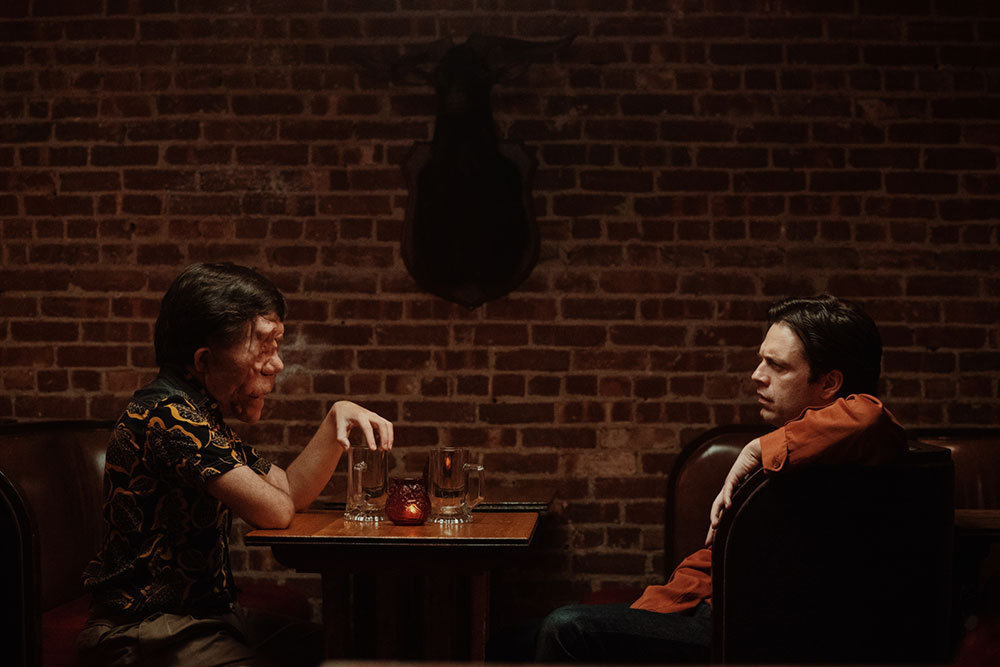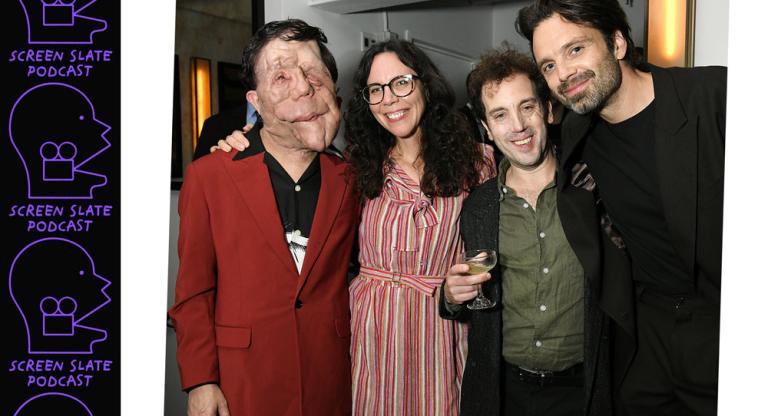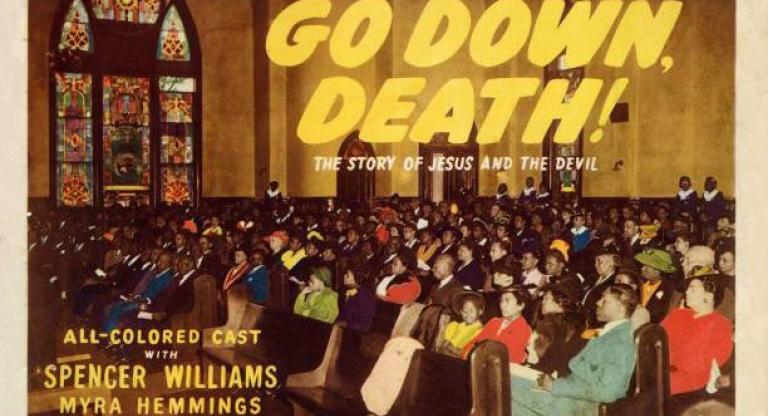A Different Man introduces us to Edward (Sebastian Stan) by way of a digital scan. The hollow, rotating diagram converts his face into raw topographical information, a purely functional photograph stripped of human expression. This is followed by an x-ray indicating an unremarkable skull and suggestions of tissue irregularities in the faint outline of his face. The details of his appearance—tumorous, asymmetrical—are revealed in a harshly-lit monochromatic medical intake photo on a low-resolution screen. When writer-director Aaron Schimberg finally puts Edward into action, he’s on a film set performing in a PSA about treating disabled coworkers as human beings. His face and his experience wearing it are remade throughout the film into variations within and beyond his control until the center of his existence becomes the absence of a center. The phenomenon “Edward” is a series of events filtered through the uneven screens of memory, desire and perception.
Edward’s new neighbor, Ingrid (Renate Reinsve), is initially shocked by his appearance but has the social grace to feign otherwise. Her tone indicates further surprise when a family photo in his apartment reveals his condition was not present in childhood, but she still plays it cool by pivoting to questions about his mother. In two masterful scenes set on Edward’s couch, they chastley explore a mutual fascination with one another while a chaos of motivations roils beneath carefully chosen words. As she inquires about his career and background, we can sense her inner monologue screaming questions about his condition. “You should get that looked at,” she says, referring to a leaky ceiling. Schimberg brilliantly probes the disjunction between thought and speech, a gap that expands exponentially whenever piety confronts disability.
After a doctor suggests an experimental procedure in which a new face would be sculpted (via mad-scientist suction hoses and 3D printing) beneath his current one, Edward enrolls. Soon his face is sloughing off in Cronenbergian agony until Sebastian Stan emerges beneath the tumors. His first night out with his new face ends in a bar-bathroom blowjob. He catches his face in the mirror during the act, and Stan’s expression silently runs through shame, joy, lust, hatred, relief and terror in about 30 seconds. Back at home he constructs a new persona and tells neighbors that Edward died by suicide, a tale embellished with details cribbed from the death of another tenant.
A flash-forward reveals that Edward’s newfound comeliness was a springboard to success as a realtor named Guy. He spots Ingrid on the street and follows her to an off-Broadway theater where she’s staging a play she wrote about a man with facial disfigurement named Edward, and the beautiful neighbor who befriends him. Guy first witnesses and then, after winning the role using a mask modeled on his old face, performs moments from his own life in Ingrid’s recreations of their time together. In the script, her timidity is redrafted as selfless love, and she becomes the first person to touch his forsaken face. The mumbling neurotic Edward is transformed into a monologuing Elephant Man eloquently desperate for the world to give him a chance. Unaware that she has cast the real Edward as her “creation” Edward, she refuses to acknowledge her work’s basis in reality. Into the fray steps Oswald (Adam Pearson), a man whose appearance resembles Guy’s old face, but whose flamboyant personality opens every door. He’s a natural thespian as well, in addition to playing multiple instruments and effortlessly attracting women. He’s everything that Edward thought he might become when creating Guy. He also possesses the authenticity of disability that Edward abandoned but Ingrid fetishizes as a director.
In the hall of mirrors that follows, lived experience becomes increasingly amorphous raw material for creative work. As in his previous film, Chained for Life (2018), in which background actors with disabilities working on a horror film mount their own off-hours production, Schimberg is concerned with what’s lost and gained in translation as we mine experience for expression and glory. Amid howlingly funny dialogue and several left turns too good to spoil here, he provokes our anxiety at the impossibility of the coherent self, and the further impossibility of recreating these selves. We’re stuck with ourselves, which is to say we’re stuck with a series of unanswerable questions. Life’s essential fragments accelerate and collide as we build identities and share ourselves with the world. Somewhere in all that commotion lies each human life.
A Different Man expands nationwide today.





